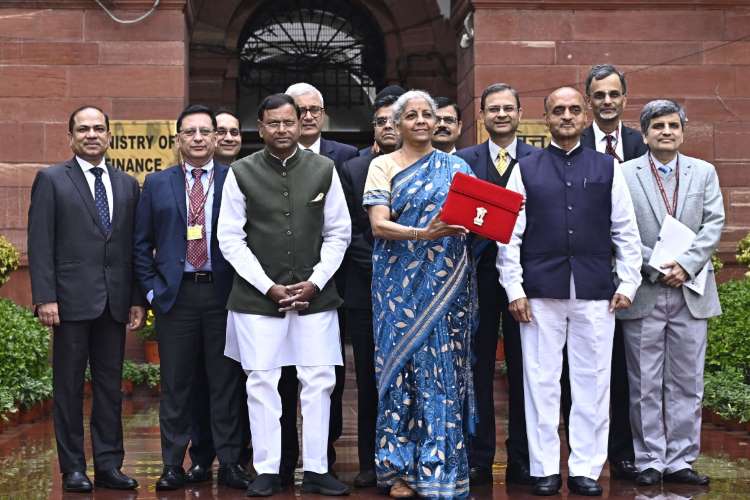
No surprises in Budget 2025: Finance Minister Nirmala Sitharaman on Thursday presented the Interim budget for financial year 2024-25 in Parliament. In her budget speech, Sitharaman highlighted the government’s commitment to four key groups: the poor, youth, women, and farmers. This budget seeks to maintain financial continuity until the formation of a new government after the Lok Sabha elections in April-May later this year.
At its core, the budget underscores the government’s commitment to the poor, youth, women, and farmers. This focus is manifested in substantial initiatives, such as the ambitious plan to construct an additional two crore houses under the Pradhan Mantri Awas Yojana — Gramin (PMAY-G) and a significant boost to the medical infrastructure with the establishment of more medical colleges. Such measures are designed to lay a solid foundation for sustainable development, addressing both immediate and future needs.
READ I Budget 2025 bets on infrastructure, fiscal prudence
No surprises in Budget 2025
In stark contrast to the surprise-laden budgets of previous years, budget 2025 prioritises stability and predictability. Tax policies remain unchanged, with a thoughtful approach to easing the tax burden on individuals earning up to Rs 7 lakh annually. This decision, coupled with the enhancement of the basic exemption limit and the reduction of the highest surcharge rate, reflects an understanding of the economic pressures faced by the common man.
The fiscal strategy of the government outlined in the budget is a masterclass in balancing growth aspirations with fiscal prudence. The projected fiscal deficit of 5.1% of GDP for 2024-25, a commendable reduction from 5.8%, signals a strong commitment to fiscal consolidation. This is further bolstered by the government’s strategic borrowing plan, which aims to sell bonds worth ₹14.13 lakh crore in FY25, a reduction from the previous fiscal. Such meticulous financial planning is indicative of a government that is not only focused on immediate electoral gains but is also steadfast in ensuring long-term economic stability.
Financial markets reaction
The reaction from the bond market to the budget announcements was overwhelmingly positive, with Indian government bonds rallying and the benchmark 10-year yield experiencing a notable decline. This market sentiment is a clear endorsement of the government’s fiscal strategy, highlighting confidence in India’s economic management and its potential to attract further foreign investment, especially with the inclusion in the JP Morgan Emerging Market Bond Index.
The equity market’s initial dip following the budget speech, followed by a swift recovery, encapsulates the reception of the budget proposals. While the immediate response may have been tempered, the overall market sentiment remains positive, buoyed by the budget’s emphasis on capital expenditure and fiscal discipline. The 11.1% increase in capital expenditure outlay for FY25 underscores the government’s commitment to bolstering infrastructure and stimulating economic growth.
Analysts and investors alike have lauded the budget’s fiscal rectitude, particularly in the context of the upcoming general elections. The decision to prioritise fiscal consolidation over populist measures is a bold statement of the government’s confidence in its economic policies and its vision for India’s future. This, coupled with the strategic boost to sectors like housing, is expected to have a ripple effect across various industries, driving growth and innovation.
The Interim Budget for 2024-25 is an expression of the government’s efforts to foster inclusive, sustainable development. By balancing fiscal prudence with growth-oriented policies, the budget lays the foundation for India’s economic future. As the country stands on the cusp of becoming the world’s third-largest economy, this budget not only addresses immediate economic challenges but also charts a course for long-term prosperity. In the face of global economic uncertainties, India’s budget stands out as a picture of stability and confidence, signalling the nation’s efforts to embrace the future with optimism and resilience.
